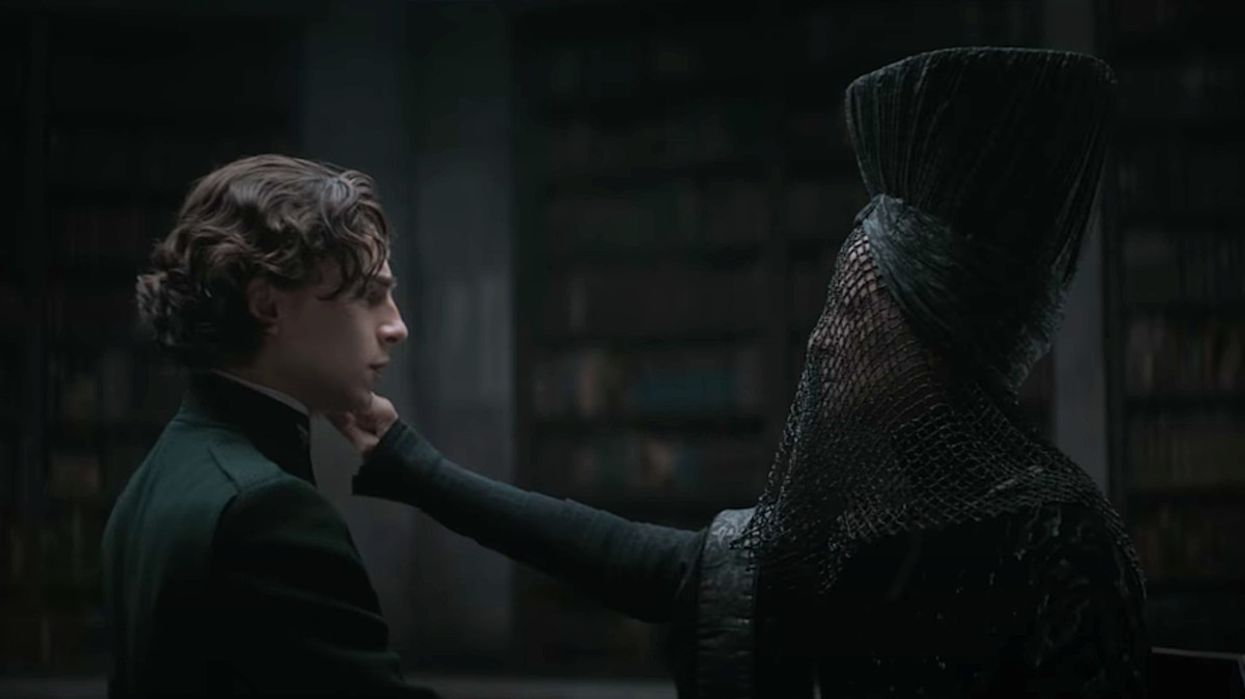Watch 'Dune' Director Denis Villeneuve Break Down a Crucial Scene
Denis Villeneuve puts a needle to your neck and asks you to pay attention.

If you watched Dune this weekend, then you know how important it is to impress the Bene Gesserit. They seem to have their hands in everything.
In a new episode of "Notes on a Scene," Dune director Denis Villeneuve breaks down the scene where Paul Atreides (Timothée Chalamet) is challenged to a test by the Bene Gesserit. It's called the Gom Jabbar, and is used to see if his humanity will overcome his animal impulses. There's a poisoned needle held to his neck to incentivize him to complete this test.
Villeneuve explains how he built such a tense scene with the layering of ancient aesthetic and visual effects. Plus, some great directing notes.
Check out this video from Vanity Fair and let's talk after.
The Gom Jabbar, also known as "the high-handed enemy," was a meta-cyanide poisoned needle that sat upon a thimble, and could thus be attached to a person's fingertip. It's an essential part of Dune lore, and in this pivotal scene, we see it used on Paul to see if he is in fact the chosen one. I love that Villeneuve describes the light in the scene as a "level of dark you would only see in a nightmare." It feels like it.
It's also interesting to hear that he shot this scene early on, and only after it was he sure he had the right cast for the movie.
We see use of "the voice" to channel other people's will. It's a good piece of exposition, hidden among the action, where few fully understand the importance of this voice and how it works. I also like hearing how Villeneuve used dollies and a changing of lights, but not a change in focus, to accentuate "the voice." This clever camera trick and editing make everything feel so real without adding VFX.
The combination of direction, costuming, and set design here is the perfect marriage. The elder sits in a chair like a chess piece. The veil that covers Charlotte Rampling's face only shows us her powerful eyes. It's off-putting and alludes to an old religion we don't have to understand, but we need to fear.
When it came to the box, they wanted to do without VFX too. So they went back to the camera tricks, adding different angles and these subtle dollies to add tension.
This is all exquisite acting. Villeneuve lets them work and access the characters. Chalamet's character is understanding he's been caught in a trap by his own mother.
When they had doubt, they would go back to the book and see how things were described and how to bring things forward. They used it in every step of the process to make sure Frank Herbert's vision came to the surface. This intention shows on the screen and elevates the visuals. Everything feels purposeful.
What were your takeaways from this video? Let us know what you think in the comments.
Source: Vanity Fair











